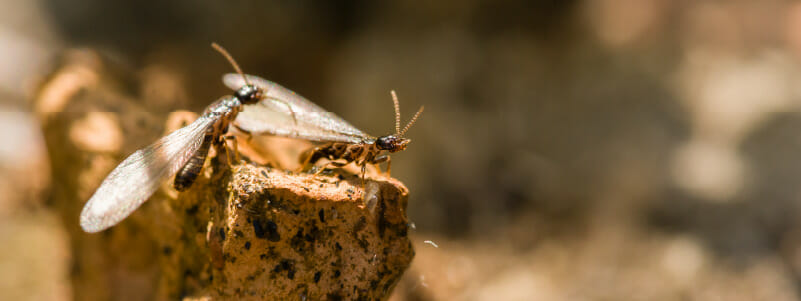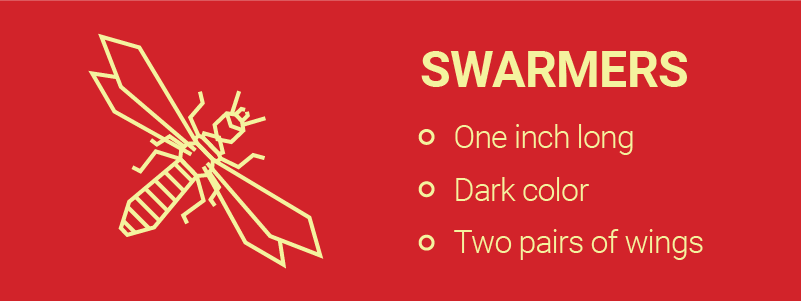Why do termites swarm?
Termites begin to swarm when a colony is ready to expand and find new food sources. Termite colonies typically only expand once per year. Once the winged termites find a suitable home, they will stop swarming and settle into their new location. The alates’ wings will fall off as they being to mature, and they will start mating to create new colonies.
When do termites swarm?
Seasonality can vary depending on the termite species, but termite swarming season usually occurs during late winter or early spring. March is usually one of the months you’ll want to watch if you’re concerned about termite activity. However, as mentioned earlier, there is no exact time of year to keep in mind or exact formula you can follow to predict termite swarming season.
Is swarming season different than termite season?
Yes. Termite swarming season refers to the relatively short window of time when winged termites are searching for a new home. Even though you’re most likely to see swarming termites as the weather warms up, you it’s possible to observe this phenomena at other points in the year.
If termites are already present, there is a good chance they are eating away at wood sources they can find, damaging your property. Termite activity is not necessarily tied to swarming season. Termites are technically all-season pests.
Are there different types of termite swarmers?
The three most common termite species in the US are drywood termites, formosan termites, and subterranean termites. These types of termites have different swarming patterns, but most tend to swarm after a rainstorm and avoid high winds.



